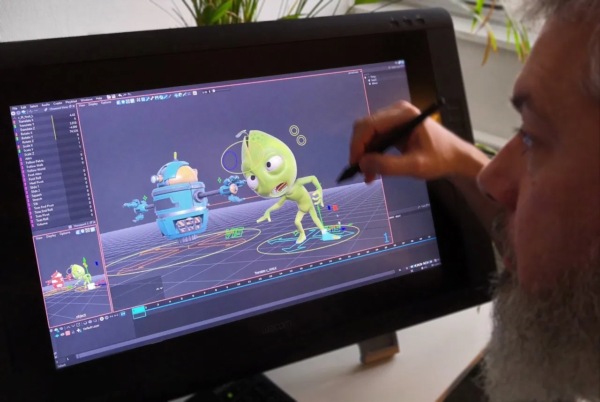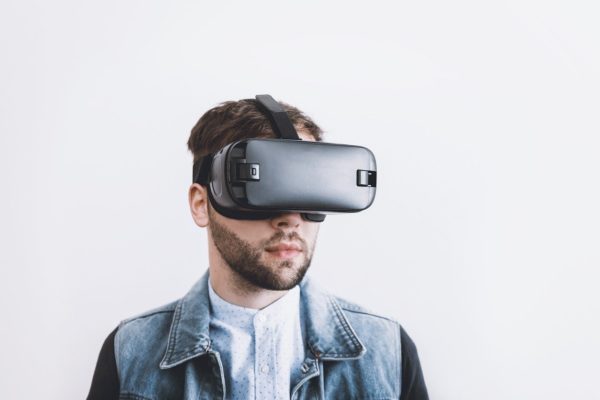
Modern animation is not limited to entertainment and advertising. It is used in very different industries. Aside from TV and movies, computer graphics is widely spread in manufacturing and medicine. It is even presented as court evidence!
Have a look at these less conventional uses of 3D animation. The demand for high-quality design is only growing, and the prospects are bright. Why not join in and master the art of CGI? Try a computer animation course online on https://motiondesign.school/products/cg-adventure in the school that invites real stars to teach all intricacies of the job. One day, your work may be useful for some of the below industries.

Table of Contents
6 Places Where 3D Animation is Used
1. Production
Panoram Technologies of California spearheads the movement. It uses animation to simplify data for customers. The technology is widely used in construction and oil production.
Walkinside is a package of simulation software that lets you explore a space (e.g., a drilling platform). The experience is described as incredibly realistic. Now, oil and gas operators may observe an oil field or storage for planning and design purposes. This reduces costs and facilitates collaboration. The avatar moves around the space freely, creating a realistic feel for the viewer. Walls, openings, and ladders bring a lifelike feeling of space.
In many commercial projects, high-class visualization makes a big difference. Today, Panoram Technologies of California applies smart 3D technology and sophisticated displays to make giant volumes of data understandable to employees working on construction sites and oil fields. According to Theo Mayer, the company’s CEO, “For oil and gas operators, being able to see a plant in 3D space from a human perspective makes it perfect for collaborative planning and design reviews, with dramatic returns on investment.”
2. Legal and Forensic Work
Here, animators help to investigate crimes. Their work allows legal professionals to understand how the victim got hurt or to prove their defendant’s innocence. In fact, the field is becoming so popular that there is a special job title – court animation expert. These employees check whether animation presented by prosecution or defense can serve as evidence. This ensures the evidence is not slanted.
Generally, forensic animation helps attorneys to convince the jury, and its use is growing. The technology helps to visualize crime scenes and focus on details of any incident. Specialists will model only relevant elements (e.g., weapons, vehicles, etc.) to simplify understanding. Aside from crime scenes, forensic CGI is used for investigation of industrial accidents and air crashes.
3. Medical Sphere
Engineering Applications Inc. was a trailblazer with its 3D databases and “fly-through” tools. It is now part of UGS, a global giant focused on imaging for manufacturing and design. Here, a prominent application is a telemedicine. A surgeon can work on patients despite being many miles away.
The technology is in high demand in the military sector – the US Army is particularly interested in remote crisis surgery. After all, it is easier to find a highly skilled professional in the States than in some Middle East hotspot. Here, computer technologies are indispensable.
Another use is surgeon training. Tailor-made video games allow players to improve their hand-eye coordination, which is crucial for the job. According to recent studies, this brings impressive results: fewer mistakes in laparoscopic surgery and higher speed of work. Dr. James Rosser of Beth Israel Medical Center has created Top Gun, a game that is used by surgeons for warm-up.
4. Biochemistry Research and Development

Pharmaceutical giants create new medicine with the help of modeling. Stereo 3D displays are used to examine intricate molecular structures. These are used by Biogen and other brands. They do not require any headgear.
Such imaging technology is provided by Kodak. Once associated with photographic film, the brand now focuses on sophisticated visualization. Known as Stereoscopic Imaging Display, it allows you to view three-dimensional effects without glasses.
5. Military Use
Few people know that the original application of online gaming and 3D technology was the military industry. The sheer size of the state animation workforce may astound you. Entertainment animators and military animators are two distinct groups of specialists that often reside in different parts of the U.S. (West Coast and East Coast, respectively). Moreover, Hollywood employees often have a vague idea of how their military counterparts work.
Florida – in particular, Orlando, – is the epicenter for the state-funded industry. This is where simulation offices for the national army and navy are situated. Officially, animation for military purposes is known as “modeling, simulation, and training”. Today, it provides roughly 16,000 in the immediate vicinity. The cost of all contracts is estimated to exceed $1 billion annually. Similar offices for the Air Force are scattered across the country.
6. Architecture
Today, clients expect more than images of empty rooms from AutoCAD. Architects are adopting “Hollywood type” animation to provide immersive visualization of their projects. It gives the opportunity to show spaces before they are built, with furniture and objects inside.
This boosts the appeal of proposed ideas. Clients may alter the layout, colors, and elements. Specialists now produce 3D renderings and take their clients on interactive VR tours. Popular systems include Maya and 3ds max. Architectural 3D makes it easier to pitch ideas to decision-makers.
So Many Uses of CGI
The most popular systems today include a head-mounted display (helmet). It has small screens (a few inches each) in front of the wearer’s eyes, which allows them to immerse in the digital environment. At the moment, opportunities for collaboration between avatars are fairly limited. Another imperfection is the so-called ‘simulator sickness’ experienced by some wearers. This, however, is true for older systems of VR. The problem is solved by stereoscopic CGI, which may be projected onto the floor, ceiling, and walls of a room where viewers stand.
To sum up, the potential is huge. Undeniably, immersive VR systems with images and interaction bring added value to different industries. More and more organizations are enhancing their processes with 3D. Sometimes, stepping outside the familiar can open impressive job opportunities.

